Novel Stool Biomarker Screening Tests Detect Colorectal Cancer and Inflammatory Bowel Disease
|
By LabMedica International staff writers Posted on 12 Jul 2021 |
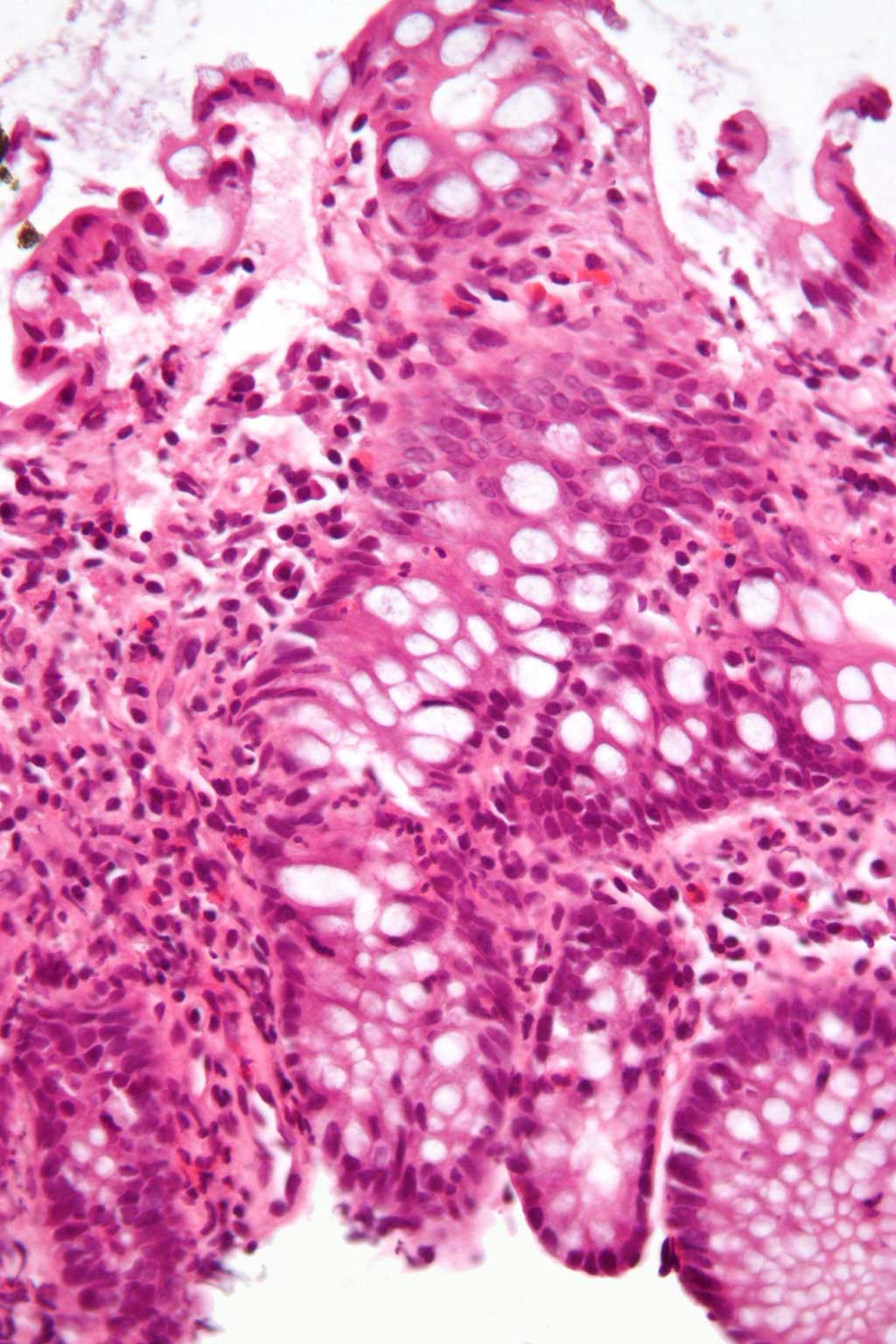
Image: Micrograph showing inflammation of the large bowel in a case of inflammatory bowel disease (Photo courtesy of Wikimedia Commons)
Two recent papers described the use of novel stool protein biomarkers in screening tests to diagnose colorectal cancer (CRC) and inflammatory bowel disease (IBD).
The attributable risk of developing IBD (ulcerative colitis and Crohn's disease) is about 0.5% in the general population, with IBD affecting about 1.6 million Americans, including as many as 80,000 children. With over 20% of cases being diagnosed before the age of 17, IBD is one of the most common gastrointestinal chronic diseases affecting children and adolescents. Globally more than one million people get colorectal cancer every year resulting in more than 715,000 deaths. CRC has been the second most common cause of cancer in women (9.2% of diagnoses) and the third most common in men (10.0%), and has been the fourth most common cause of cancer death after lung, stomach, and liver cancer. People with inflammatory bowel disease (ulcerative colitis and Crohn's disease) are at increased risk of developing colon cancer.
Investigators at the University of Houston (TX, USA) conducted studies to identify and validate stool protein biomarkers for diagnosis of CRC and IBD. In one study, published in the June 12, 2021, online edition of the Journal of Gastroenterology, a novel aptamer-based screen of 1317 proteins was used to uncover elevated proteins in the stool of patients with CRC, as compared to healthy controls (HCs). A total of 92 proteins were significantly elevated in CRC samples as compared to HCs. Among Caucasians, the five most discriminatory proteins among the 16 selected proteins, ordered by their ability to distinguish CRC from adenoma and healthy controls, were MMP9, haptoglobin, myeloperoxidase, fibrinogen, and adiponectin. Excepting myeloperoxidase, the markers were significantly associated with depth of tumor invasion.
In another study, which was published in the June 28, 2021, online edition of the journal Nature Communications, an aptamer-based screen of 1129 stool proteins was conducted using stool samples from an IBD cohort. Results of the screen revealed that of the 20 proteins subsequently validated by ELISA, stool ferritin, fibrinogen, haptoglobin, hemoglobin, lipocalin-2, MMP-12, MMP-9, myeloperoxidase, PGRP-S, properdin, resistin, serpin A4, and TIMP-1 were significantly elevated in both ulcerative colitis (UC) and Crohn’s disease (CD) as compared to controls.
Aptamers are nucleic acid species that have been engineered through repeated rounds of in vitro selection to bind to various molecular targets such as small molecules, proteins, nucleic acids, and even cells, tissues, and organisms. Aptamers are useful in biotechnological and therapeutic applications as they offer molecular recognition properties that rival that of antibodies. In addition to their discriminate recognition, aptamers offer advantages over antibodies as they can be engineered completely in a test tube, are readily produced by chemical synthesis, possess desirable storage properties, and elicit little or no immunogenicity in therapeutic applications.
"The unique aspect of both research reports is that we are looking at stool samples comprehensively, and not just at one or two favorite molecules," said senior author Dr. Chandra Mohan, professor of biomedical engineering in the University of Houston. "We are casting a wide net, and this has never been done before. Using the new biomarkers, we can predict if the disease will become worse or if the intestines will become more inflamed. Stool proteins assayed at baseline can predict how the disease might progress in the weeks and months ahead. By the time you see blood, it might be too late, and there are other proteins that appear in the stool if someone has colon cancer, and they may appear much earlier than when the blood appears. We demonstrate the utility of comprehensive aptamer-based proteomic screens in identifying novel disease biomarkers for IBD that outperform the current gold standard, fecal calprotectin."
Related Links:
University of Houston
The attributable risk of developing IBD (ulcerative colitis and Crohn's disease) is about 0.5% in the general population, with IBD affecting about 1.6 million Americans, including as many as 80,000 children. With over 20% of cases being diagnosed before the age of 17, IBD is one of the most common gastrointestinal chronic diseases affecting children and adolescents. Globally more than one million people get colorectal cancer every year resulting in more than 715,000 deaths. CRC has been the second most common cause of cancer in women (9.2% of diagnoses) and the third most common in men (10.0%), and has been the fourth most common cause of cancer death after lung, stomach, and liver cancer. People with inflammatory bowel disease (ulcerative colitis and Crohn's disease) are at increased risk of developing colon cancer.
Investigators at the University of Houston (TX, USA) conducted studies to identify and validate stool protein biomarkers for diagnosis of CRC and IBD. In one study, published in the June 12, 2021, online edition of the Journal of Gastroenterology, a novel aptamer-based screen of 1317 proteins was used to uncover elevated proteins in the stool of patients with CRC, as compared to healthy controls (HCs). A total of 92 proteins were significantly elevated in CRC samples as compared to HCs. Among Caucasians, the five most discriminatory proteins among the 16 selected proteins, ordered by their ability to distinguish CRC from adenoma and healthy controls, were MMP9, haptoglobin, myeloperoxidase, fibrinogen, and adiponectin. Excepting myeloperoxidase, the markers were significantly associated with depth of tumor invasion.
In another study, which was published in the June 28, 2021, online edition of the journal Nature Communications, an aptamer-based screen of 1129 stool proteins was conducted using stool samples from an IBD cohort. Results of the screen revealed that of the 20 proteins subsequently validated by ELISA, stool ferritin, fibrinogen, haptoglobin, hemoglobin, lipocalin-2, MMP-12, MMP-9, myeloperoxidase, PGRP-S, properdin, resistin, serpin A4, and TIMP-1 were significantly elevated in both ulcerative colitis (UC) and Crohn’s disease (CD) as compared to controls.
Aptamers are nucleic acid species that have been engineered through repeated rounds of in vitro selection to bind to various molecular targets such as small molecules, proteins, nucleic acids, and even cells, tissues, and organisms. Aptamers are useful in biotechnological and therapeutic applications as they offer molecular recognition properties that rival that of antibodies. In addition to their discriminate recognition, aptamers offer advantages over antibodies as they can be engineered completely in a test tube, are readily produced by chemical synthesis, possess desirable storage properties, and elicit little or no immunogenicity in therapeutic applications.
"The unique aspect of both research reports is that we are looking at stool samples comprehensively, and not just at one or two favorite molecules," said senior author Dr. Chandra Mohan, professor of biomedical engineering in the University of Houston. "We are casting a wide net, and this has never been done before. Using the new biomarkers, we can predict if the disease will become worse or if the intestines will become more inflamed. Stool proteins assayed at baseline can predict how the disease might progress in the weeks and months ahead. By the time you see blood, it might be too late, and there are other proteins that appear in the stool if someone has colon cancer, and they may appear much earlier than when the blood appears. We demonstrate the utility of comprehensive aptamer-based proteomic screens in identifying novel disease biomarkers for IBD that outperform the current gold standard, fecal calprotectin."
Related Links:
University of Houston
Latest Molecular Diagnostics News
- DNA Methylation Signatures of Aging Could Help Assess Mortality Risk
- Molecular Diagnostics System Provides Lab-Quality Results at POC
- Cellular Signature Identifies Patients with Treatment Resistant Prostate Tumors
- MCED Could Be Valuable Supplement to Traditional Cancer Screening Approaches
- Newly-Cleared Technology a Game Changer for Diagnosis of Lyme Disease
- Innovative Liquid Biopsy Test Uses RNA to Detect Early-Stage Cancer
- Rapid Tests for Chagas Disease Improves Diagnostic Access
- Simple Blood Test to Predict Alzheimer’s Clinical Progression in Earliest Stages
- Saliva Test Could Identify People Genetically Susceptible to Type 2 Diabetes
- Pioneering Analyzer with Advanced Biochip Technology Sets New Standard in Lab Diagnostics
- RNA-Seq Based Diagnostic Test Enhances Diagnostic Accuracy of Pediatric Leukemia
- New Technique for Measuring Acidic Glycan in Blood Simplifies Schizophrenia Diagnosis
- Injury Molecular Fingerprint Enables Real-Time Diagnostics for On-Site Treatment
- Blood Test Could Predict Likelihood of Breast Cancer Spreading to The Bone
- New Infectious Disease Analytics Platform Speeds Up Clinical Decision-Making at POC
- Genetic Test Could Predict Poor Outcomes in Lung Transplant Patients
Channels
Clinical Chemistry
view channel
New Clinical Chemistry Analyzer Designed to Meet Growing Demands of Modern Labs
A new clinical chemistry analyzer is designed to provide outstanding performance and maximum efficiency, without compromising affordability, to meet the growing demands of modern laboratories.... Read more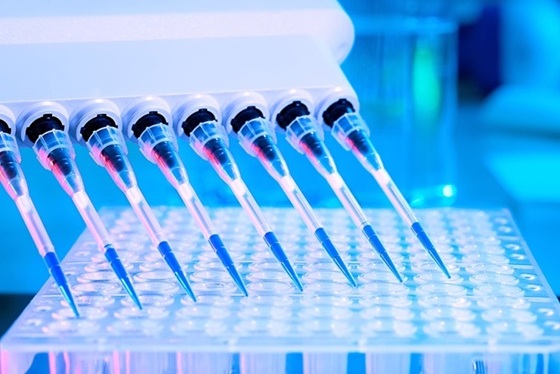
New Reference Measurement Procedure Standardizes Nucleic Acid Amplification Test Results
Nucleic acid amplification tests (NAATs) play a key role in diagnosing a wide range of infectious diseases. These tests are generally known for their high sensitivity and specificity, and they can be developed... Read moreHematology
view channel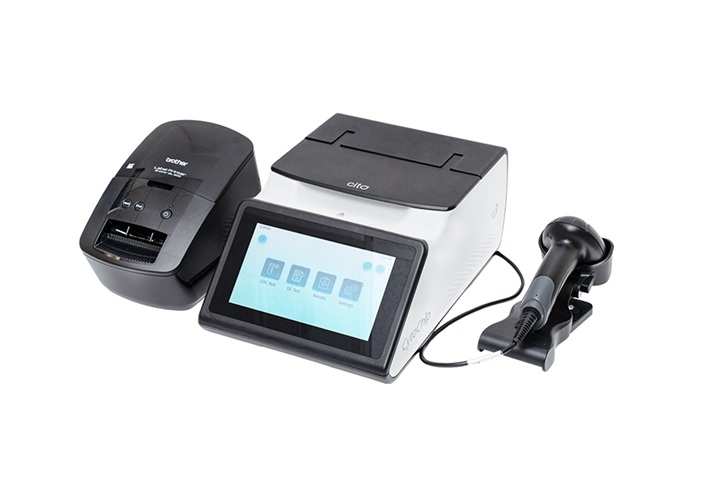
Disposable Cartridge-Based Test Delivers Rapid and Accurate CBC Results
Complete Blood Count (CBC) is one of the most commonly ordered lab tests, crucial for diagnosing diseases, monitoring therapies, and conducting routine health screenings. However, more than 90% of physician... Read more
First Point-of-Care Heparin Monitoring Test Provides Results in Under 15 Minutes
Heparin dosing requires careful management to avoid both bleeding and clotting complications. In high-risk situations like extracorporeal membrane oxygenation (ECMO), mortality rates can reach about 50%,... Read moreImmunology
view channel
Evolutionary Clinical Trial to Identify Novel Biomarker-Driven Therapies for Metastatic Breast Cancer
Metastatic breast cancer, which occurs when cancer spreads from the breast to other parts of the body, is one of the most difficult cancers to treat. Nearly 90% of patients with metastatic cancer will... Read more
Groundbreaking Lateral Flow Test Quantifies Nucleosomes in Whole Venous Blood in Minutes
Diagnosing immune disruptions quickly and accurately is crucial in conditions such as sepsis, where timely intervention is critical for patient survival. Traditional testing methods can be slow, expensive,... Read moreMicrobiology
view channel
Viral Load Tests Can Help Predict Mpox Severity
Mpox is a viral infection that causes flu-like symptoms and a characteristic rash, which evolves significantly over time and varies between patients. The disease spreads mainly through direct contact with... Read more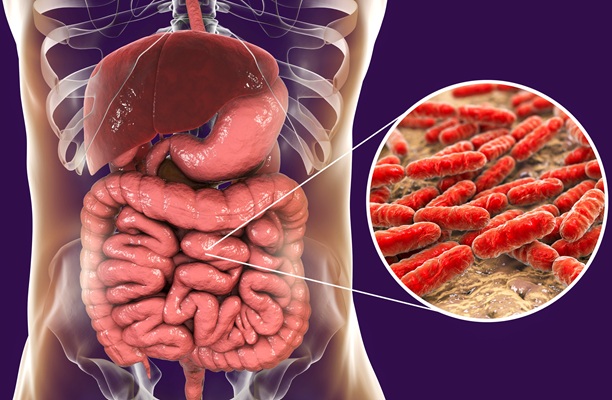
Gut Microbiota Analysis Enables Early and Non-Invasive Detection of Gestational Diabetes
Gestational diabetes mellitus is a common metabolic disorder marked by abnormal glucose metabolism during pregnancy, typically emerging in the mid to late stages. It significantly heightens the risk of... Read morePathology
view channel
AI Accurately Predicts Genetic Mutations from Routine Pathology Slides for Faster Cancer Care
Current cancer treatment decisions are often guided by genetic testing, which can be expensive, time-consuming, and not always available at leading hospitals. For patients with lung adenocarcinoma, a critical... Read more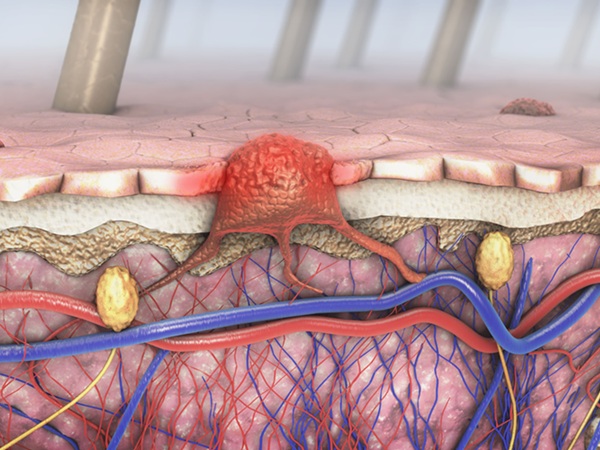
AI Tool Enhances Interpretation of Tissue Samples by Pathologists
Malignant melanoma, a form of skin cancer, is diagnosed by pathologists based on tissue samples. A crucial aspect of this process is estimating the presence of tumor-infiltrating lymphocytes (TILs), immune... Read more
AI-Assisted Technique Tracks Cells Damaged from Injury, Aging and Disease
Senescent cells, which stop growing and reproducing due to injury, aging, or disease, play a critical role in wound repair and aging-related diseases like cancer and heart disease. These cells, however,... Read more
Novel Fluorescent Probe Shows Potential in Precision Cancer Diagnostics and Fluorescence-Guided Surgery
Hepatocellular carcinoma (HCC), a common type of liver cancer, is difficult to diagnose early and accurately due to the limitations of current diagnostic methods. Glycans, carbohydrate structures present... Read moreTechnology
view channel
Multifunctional Nanomaterial Simultaneously Performs Cancer Diagnosis, Treatment, and Immune Activation
Cancer treatments, including surgery, radiation therapy, and chemotherapy, have significant limitations. These treatments not only target cancerous areas but also damage healthy tissues, causing side effects... Read more
Ultra-Sensitive Biosensor Based on Light and AI Enables Early Cancer Diagnosis
Cancer diagnosis is often delayed due to the difficulty in detecting early-stage cancer markers. In particular, the concentration of methylated DNA in the bloodstream during the early stages of cancer... Read moreIndustry
view channel
Quanterix Completes Acquisition of Akoya Biosciences
Quanterix Corporation (Billerica, MA, USA) has completed its previously announced acquisition of Akoya Biosciences (Marlborough, MA, USA), paving the way for the creation of the first integrated solution... Read more
Lunit and Microsoft Collaborate to Advance AI-Driven Cancer Diagnosis
Lunit (Seoul, South Korea) and Microsoft (Redmond, WA, USA) have entered into a collaboration to accelerate the delivery of artificial intelligence (AI)-powered healthcare solutions. In conjunction with... Read more









 Extraction or Purification Kit.jpg)













